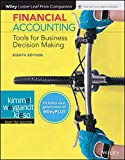
(a) (1)
Annual Report: It is a comprehensive financial report that shows all the business activities that takes place throughout the previous financial year. Its purpose is to provide the complete financial information of a company’s financial activities to its users in order to help them analyze and take well informed decisions.
Financial Ratios: Financial ratios are the metrics used to evaluate the overall financial performance of a company during a specific period of time.
To compute: Return on assets
(a) (1)
Explanation of Solution
Compute the return on assets ratio for Incorporation A, and Incorporation W for the year 2014.
| Title: Compute the return on assets ratio | ||
| Ratios | Incorporation A | Incorporation W |
|
|
|
|
Table (1)
Working notes:
Compute the average total assets for Incorporation A.
Beginning total assets =$54,505
Ending total assets =$40,159
Compute the average total assets for Incorporation W.
Beginning total assets =$204,751
Ending total assets =$203,706
For net income, refer Consolidated Statements of Operations for the year 2014 reported in Appendix D for Incorporation A and refer Consolidated Statements of Comprehensive Income: Consolidated net income attributable to Incorporation W for the year 2014 Appendix E for Company VF.
For average total assets, refer Consolidated Balance Sheets for the year 2014 reported in Appendix D for Incorporation A and Appendix E for Incorporation W. The total assets reported at the end of the year 2013, is the beginning total assets for the year 2014.
(a) (2)
To compute: Profit margin ratio
(a) (2)
Explanation of Solution
Compute the profit margin ratio for Incorporation A and Incorporation W for the year 2014.
| Title: Compute the profit margin ratio | ||
| Ratios | Incorporation A | Incorporation W |
|
|
|
|
Table (2)
Explanation:
For net income and net sales, refer Consolidated Statements of Operations for the year 2014 reported in Appendix D for Incorporation A, and refer Consolidated Statements of Income for the year 2014 Appendix E for Incorporation W.
(a) (3)
To compute: Assets turnover ratio
(a) (3)
Explanation of Solution
Compute the assets turnover ratio for Incorporation A and Incorporation W for the year 2014.
| Title: Compute the assets turnover ratio | ||
| Ratios | Incorporation A | Incorporation W |
|
|
|
|
Table (2)
For net sales, refer Consolidated Statements of Operations for the year 2014 reported in Appendix D for Incorporation A and refer Consolidated Statements of Income for the year 2014 Appendix E for Incorporation W.
For average total assets, refer Consolidated Balance Sheets for the year 2014 reported in Appendix D for Incorporation A and Appendix E for Incorporation W. The total assets reported at the end of the year 2013, is the beginning total assets for the year 2014.
(b)
To conclude: on the management of the plant assets from the findings.
(b)
Explanation of Solution
The assets turnover ratio indicates how efficiently a company utilizes its available assets to maximize its sales. The assets turnover ratio of Incorporation W is higher than Incorporation A. It indicates that Incorporation W has more effectively used its assets, to generate revenue.
Moreover, Incorporation W had been able to earn more profits out of its sales than Incorporation A that is, indicated in the significant difference of the profit margin ratio for both the companies. This resulted in higher return on assets for Incorporation W than Incorporation A.
There, it can be concluded that Incorporation W having more assets turnover, profit margin, and return on assets implies that, it has a more effective, and efficient asset management system than Incorporation A.
Want to see more full solutions like this?
Chapter 9 Solutions
Financial Accounting: Tools for Business Decision Making, 8e WileyPLUS (next generation) + Loose-leaf
- At the end of the current year, the owners'equity in Beacon Co. is now $425,000. During the year, the assets of the business had increased by $93,000 and the liabilities had increased by $156,000. What must Owners' equity at the beginning of the year have been?arrow_forwardWhat are the total assets ?arrow_forwardAccounting solutionarrow_forward
- Century 21 Accounting Multicolumn JournalAccountingISBN:9781337679503Author:GilbertsonPublisher:CengagePrinciples of Accounting Volume 1AccountingISBN:9781947172685Author:OpenStaxPublisher:OpenStax College
 Financial Accounting: The Impact on Decision Make...AccountingISBN:9781305654174Author:Gary A. Porter, Curtis L. NortonPublisher:Cengage Learning
Financial Accounting: The Impact on Decision Make...AccountingISBN:9781305654174Author:Gary A. Porter, Curtis L. NortonPublisher:Cengage Learning Financial AccountingAccountingISBN:9781337272124Author:Carl Warren, James M. Reeve, Jonathan DuchacPublisher:Cengage Learning
Financial AccountingAccountingISBN:9781337272124Author:Carl Warren, James M. Reeve, Jonathan DuchacPublisher:Cengage Learning





